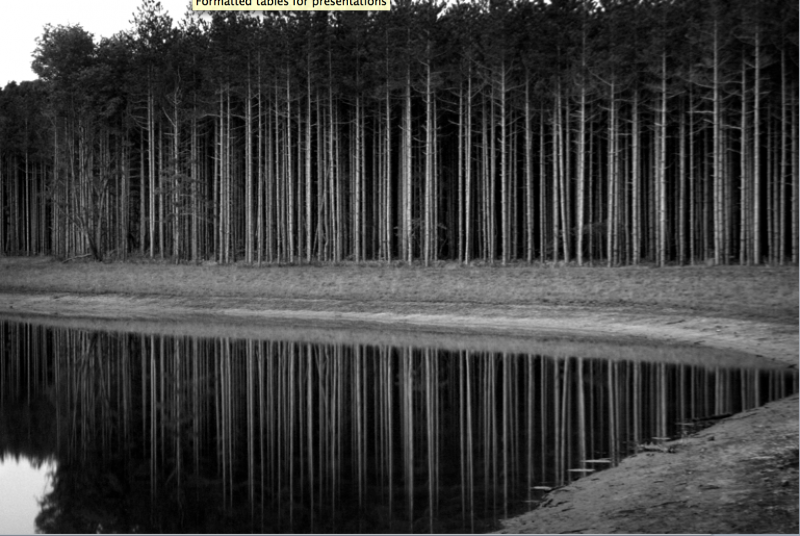Serendip is an independent site partnering with faculty at multiple colleges and universities around the world. Happy exploring!
Jenna Myers's blog

Representation in Science: Bias and Negativity
What are the similarities and differences between the following images?

(Callaway)

(Callaway)

Curriculum Paper- Climate Change Through TIme
Climate Change Affecting Earth Through Time
Rationale:
For this curriculum I wanted to see how a classroom of 5th grade students would react to climate change and predict what climate change will do to their neighborhoods. Throughout this semester in the Ecoliteracy 360 I have been very interested in the idea of perception. Specifically I was interested in how others react to the five senses: sight, smell, touch, taste, and sound. Depending on a location of a school or of someone’s home they will perceive their neighborhood in a different way than another.
Curriculum Unit Overview and Objectives:

Perception
As I continue reading The Hungry Tide I find more instances of perception. Each character sees the world in a different way and when two characters cross paths throughout the book you notice these differences between the characters as well as the qualities of each character. Going back to the quote I brought up on Monday:
"a map of the sea floor made by geologists. In the reversed reflief of this map they would see with their own eyes that the Ganga does not come to an end after it flows into the Bay of Bengal. It joins with the Brahmaputra in scouring a long, clearly marked channel along the floor of the bay. The map would reveal to them what is otherwise hidden underwater" (150-151).
There are many ways people can perceive rivers. You can look at the flow of the river, how a river connects to another body of water, what lays beneath the surface, the amount of pollution, etc. Depending on the background of a person or a persons interests they may perceive a river in a different way as oppossed to another. A scientist might look at coral reef and see the environmental dangers causing harm to the reef whereas a poet might write about the beauty of the river. It's not always black and white, but there always is some sort of bias towards how you will react.

Living Memories
When I was younger, around the age of 10 my mother told me a lie that made me question my ability to make my own decisions and put constraints on me via my family identity. I was conversing with my mother and the topic of tattoos came up and I told her that I wanted one. Her immediate response was, “If you get a tattoo you won’t be allowed to be buried in a Jewish cemetery. Is that what you really want?” At the time I agreed with her and put the tattoo idea behind me. A few years later I decided to do a google search of “Can a person with a tattoo be buried in a Jewish cemetery?” The answer I saw wasn’t what I expected. The answer said that there is no such Jewish law about a Jew not being buried in a Jewish cemetery because they have a tattoo. However in some cases a person already laid to rest might have requested that no one with a tattoo be buried next to them. Other then that it is acceptable for me to get a tattoo and I felt betrayed by my mother. My mother was forcing me to be on this path that I didn’t want to be on. A path filled with her making all of the decisions for me. However this made me think about other cultures and religions where people are forced to stay on a particular path and have different ways in which they respect the dead. Whether your culture or religion buries a person the day they pass away, not using a casket for burial, or not having upright tombstones.

The Kids are in Charge
Based on our readings I feel that allowing student input in what they learn is really important. “Dropping” or placing kids into an environment and see what they do and see what they pick up from the environment. If we drop the kids into Harriton house will they focus on the animals? The sounds of the machines? The smell of burning metal? Or if you take a group of fifth graders to the Shonibare exhibit, what connections will they make? If you have a strict curriculum for students, at some point they will want to break free and explore their own interests. I think it’s important to allow kids to explore on their own and then start asking questions in the classroom. Teaching shouldn't follow a strict schedule, teachers should be open to having a fluid classrooms.

Harriton House
I had no idea that Harriton House existed, so I am glad that we were able to walk over and visit. It felt like the perfect spring day. The sun was shining and the flowers were starting to bloom. We all walked about the area a bit and then a majority of the group sat on the grass and took everything in. While I was lying there I was taking in all of the sounds around me. From the sounds of the hammering and construction work to the sounds the sheep made as they were grazing. Harriton House seem like a good get away place where you can just relax and take in the scenery. All of the stress from the week seemed to lift away.

Accommodations in the School Systems: Language Differences and Disabilities
After looking through all of the readings we have done so far in class I decided I wanted to focus on the readings that coverered bilingualism in public schools as well as focusing on disabilities in the public school system. The main focus for this essay is on accessibility: Accessibility for people with learning diabilities or language differences in the public school system as well as accessibility for people in nature whether it’s in natural parks or in playgrounds with man-made structures. For this essay I looked at Lapayese’s essay on bilingualism in public schools, two essays on disabilities, as well as Price’s essay which focused on the idea of access. I also wanted to tie in my own experiences with disabilities and school systems.

Apocalypse Response
I was somewhat shocked when I read Apocalypse, New Jersey: A Dispatch From America’s Most Desperate Town written by Matt Taibbi. Throughout the article Taibbi talks about the negatives of Camden. How Camden has been pushed aside from New Jersey and Philadelphia due to the amount of crime, violence, and drugs within the neighborhood. Even though we’ve only been to Camden twice I still feel that Camden is progressing and isn’t want Taibbi portrayed it as. Yes part of the streets, parks, and buildings have some vandalism or destruction to them, but I feel like I don’t see the violence. I was surprised when Taibbi mentioned that when police officers stopped working the crime rate went up and that now there are all of these hi-tec security cameras all over to detect when different crimes are occurring. The other point Taibbi made was that there were 175 open-air drug markets and that Christie “wanted to go after New Jersey urban schools, which he derided as failure factories.” I think that ways in which to help the community would be by adding more businesses to the neighborhood to increase the job market. Once more jobs are available there will be less tension within the community. Taibbi made Camden seem like a terrifying community to go to, but to me it has progressed more and will continue to progress.

Planting, Venn Diagrams, and Leaves
The beginning of the week was not the best due to the horrible flu going on around campus. I was determined to be better by the time Friday came. I was so excited to be able to go to Camden on Friday. I kept thinking that the morning was going to be cold and miserable, but once I walked into the greenhouse I felt really happy and warm. Going around in the large circle and saying our names and doing a dance move was a lot of fun and a great way to break the ice between us and the 5th graders. I was paired with two fifth graders and a volunteer student (I won’t be using their names in this post). The four of us were a speed team as we were planting. As we planted I kept asking the fifth graders if they had planted seeds before or the types of vegetables they liked to eat. The two of them kept telling me how much they hated eggplant and I just kept thinking how much I wanted to cook them eggplant the way I make it and have them try it.

Exiled by Natural Disasters?
Since we’ve written our first papers about home, I have realized that there are more factors that go into a home and what defines a home. In my first paper Anne mentioned whether I would consider geologic and natural disasters as part of my home. After reading Exile & Pride by Eli Clare I saw natural disasters as being part of my definition of home. However, in my opinion, natural disasters try to exiles humans from their homes.
In Exile & Pride Eli Clare talks about his physical disabilities but how he still embraces nature through hiking regardless of the fact that he has a “disability.” People don’t choose to be born with a disability, but if they do have one they learn how to work with it to live a “normal” life. Eli embraces his disability just like he embraces nature. He works with his disability to be able to do what he loves and wants to do. This ties into the idea of where we choose to have our homes and what events will try to “exile” us from them.
Natural disasters are a part of the planet. They affect various areas of Earth mainly along coasts or on plate boundaries where two plates (oceanic or continental) collide, separate, or slide past each other. Natural disasters include volcanic eruptions, earthquakes, floods, tsunamis, tornadoes, hurricanes, etc. In most cases, these events cause property damages, injuries, deaths, and in the long run economic issues due to the rebuilding of the area(s). In particular I wanted to focus on Hurricane Sandy.


